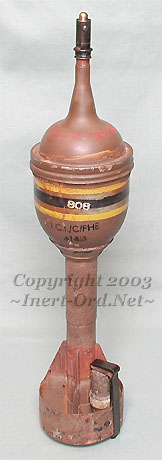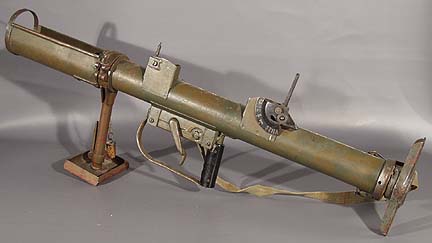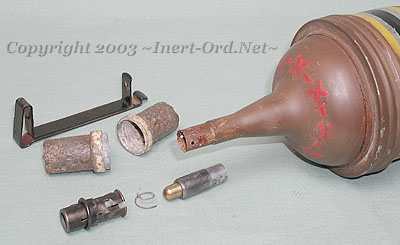
From 1942 to 1950 this was the primary anti-tank weapon for British infantry.
The PIAT was the invention of artillery officer Lieutenant Colonel Blacker.
Although development started in 1937, as a replacement for the Boys AT Rifle, it wasn't a well received concept as it was originally based on the 2" HE mortar projectile. In 1940 Blacker became involved with MD1, a department of the Ministry of Defense and in association with them improved the overall design and enlarged the warhead to a 3-1/4" shaped charge type.
The PIAT was eventually adopted early in 1942 and went into production later that year.

The bomb consisted of a three pound hollow charge
warhead with an impact nose fuze. The finned hollow tail boom contained a
small propelling charge. The simple tubular metal discharger was 37 inches long, weighed about 32 pounds and
consisted of an open tray in front of a spring-loaded spigot rod .
